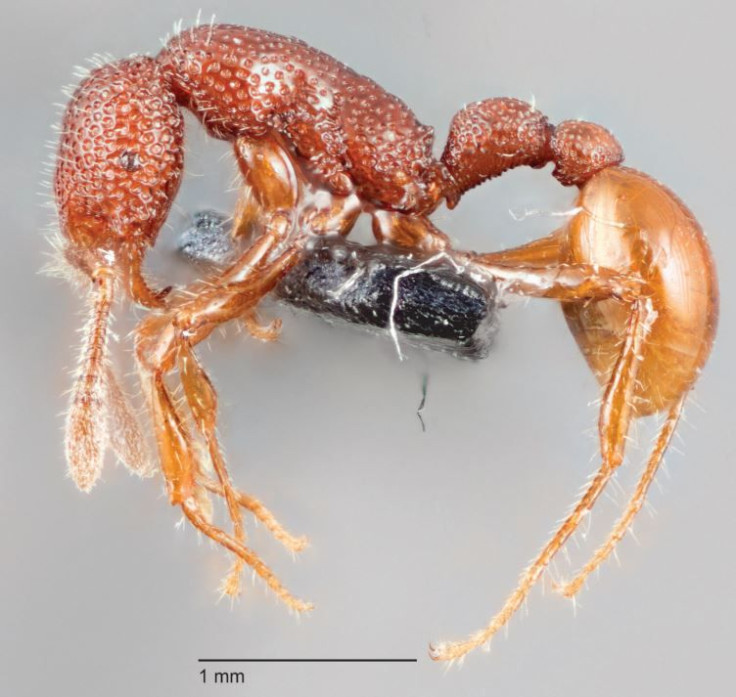Dinosaur Ant: Captured ‘T. rex’ Insect Colony Filled With Scared Cannibals

Scientists have found the T. rex alive in Singapore, finally capturing an elusive ant that was named for the similar-looking dinosaur after years of dead ends. And it turns out the species is a big wimp that won’t eat its food, but will devour a male companion.
Members of the Tyrannomyrmex rex species had only been found dead until this point, since first being discovered in 2003, but a new study in the journal Asian Myrmecology describes a colony uncovered underneath leaves at the base of a tree last year. After observing the tropical ants, the researchers say they are “timid,” curling in their heads and butts and staying frozen in that position when confronted with either another creature like a millipede or the footsteps of a scientist.
Read: Fossil Shows What Passed for Insect Romance in Ancient Times
The ants, which were compared to the extinct dinosaur Tyrannosaurus rex because of their head shape and short forearms, were “remaining motionless until the ‘aggressor’ moved on, after which the ants quickly moved away,” the study says, with one exception: When a millipede wiggled onto a cluster of the ants, one of them grabbed and stung it.
Despite observing them in a laboratory, the researchers reported that they still don’t know what the T. rex usually eats, because the ants wouldn’t take anything offered to them, from centipedes to spiders to termites to honey — they felt up the food with their antennae and then walked away.
“This behavior was consistent for both live and dead prey items offered,” the authors noted. “Considering their extremely timid nature … it is conceivable that T. rex are specialized predators of invertebrates which are much smaller than themselves, eggs of other invertebrates, or are scavengers.”
They did eat something, however, in the presence of the scientists: a male of their species. According to the study, two days after the team collected the live colony, a male came out and was “completely consumed by its nestmates soon after.”
Another finding was that the T. rex ant is probably nocturnal, based on observations of when they were active and when they were not.
The ants moved largely during night hours and stayed motionless during daylight hours, regardless of whether the researchers kept them in darkness or shined artificial lights onto the colony. The team wasn’t sure how the ants measured their days and nights.
Read: New Butterfly Species Found at Ski Resort
“The environmental cues by which T. rex may maintain circadian rhythms are unknown,” the study says.
According to a report on the research, the researchers killed the ants after 10 days of research to preserve and further study their bodies.
© Copyright IBTimes 2024. All rights reserved.





















